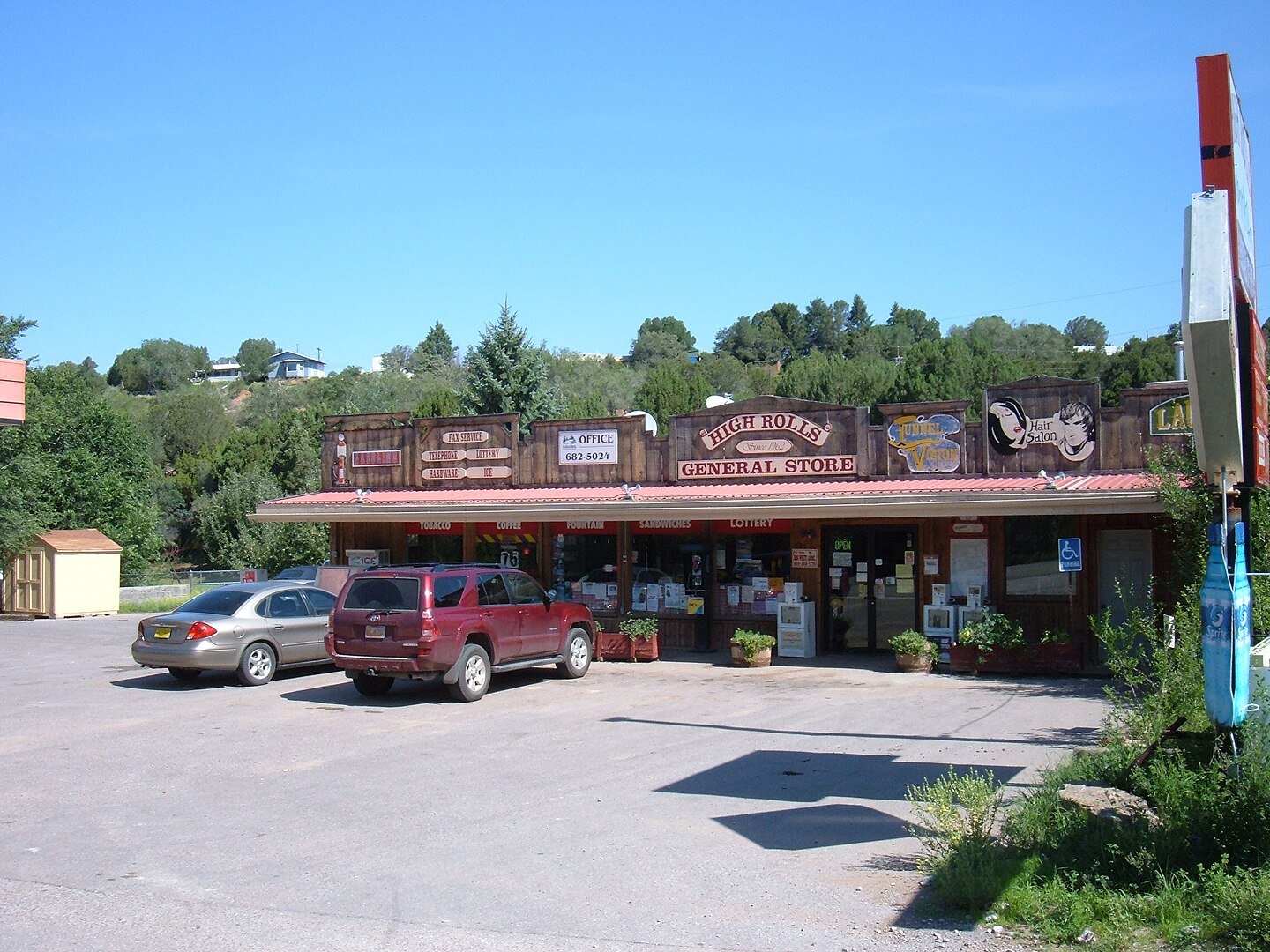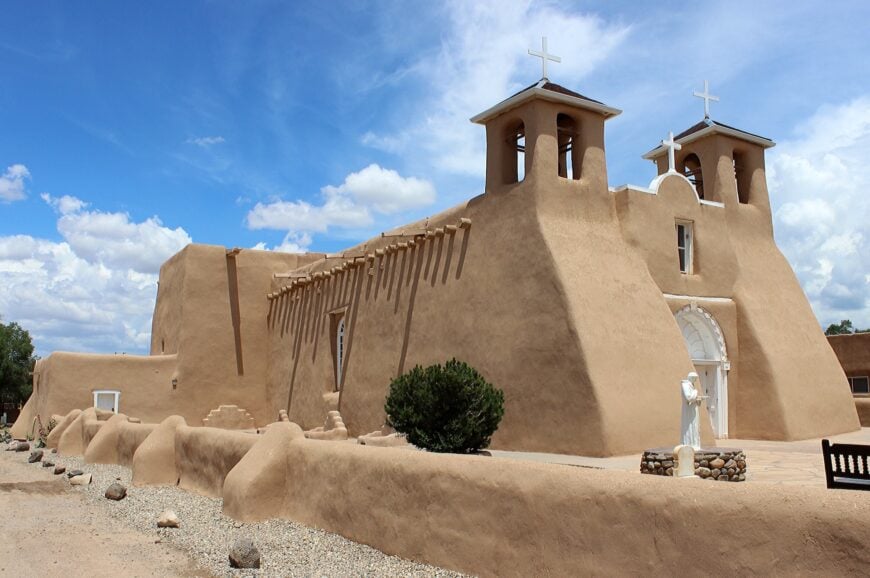
I’ve always felt that New Mexico’s small towns preserve more history in a single adobe wall than many big cities manage in an entire skyline. Nowhere is that truer than in the mission communities scattered across the state, where Spanish, Pueblo, and frontier stories weave together in sun-warmed brick and weathered vigas.
If you share my passion for dusty back roads, creaking church doors, and the scent of piñon smoke, you’re in for a treat. The following towns aren’t just postcard stops; they’re living museums where festivals still circle centuries-old plazas and locals gladly point visitors toward hidden chapels.
From high-desert ruins to mesa-top marvels, each place offers its own window into the era when Franciscan friars and Pueblo artisans worked side by side. Let’s count down my favorite eighteen spots and see why every mission here has a tale worth the trip.
18. San Patricio: Enjoy Rustic Charm and Historic Churches
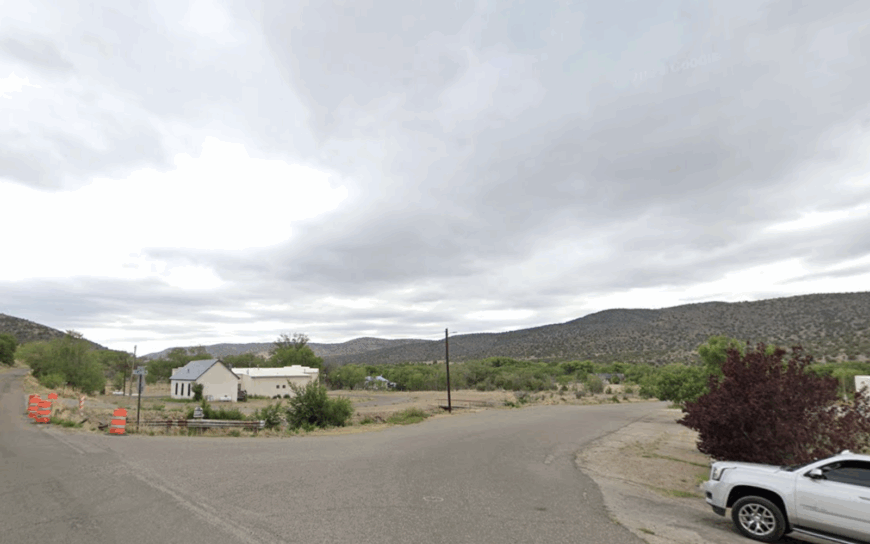
San Patricio settles quietly in the cottonwood-lined Hondo Valley, and I love how time seems to slow the minute I drive in. The village’s modest Santo Niño de Atocha chapel sits near the more famous San Patricio Catholic Church, both echoing the simple mission style that first drew settlers here in the 1850s.
Art lovers may recognize the area from the paintings of Peter Hurd and Henriette Wyeth, whose former studios now house rotating exhibits that pair perfectly with mission sightseeing. If you visit in spring, the apple orchards bloom against dusty hills, giving the entire valley a lyrical glow.
A quick stop at the unpaved cemetery reveals intricately carved wooden crosses that speak volumes about local devotion. All told, San Patricio feels like an open-air archive where mission history blends seamlessly with ranching life and creative spirit.
The average price for a 3-4 bedroom home in San Patricio ranges from $250,000 to $400,000, offering peaceful desert living near one of New Mexico’s most scenic mission sites.
Where is San Patricio?
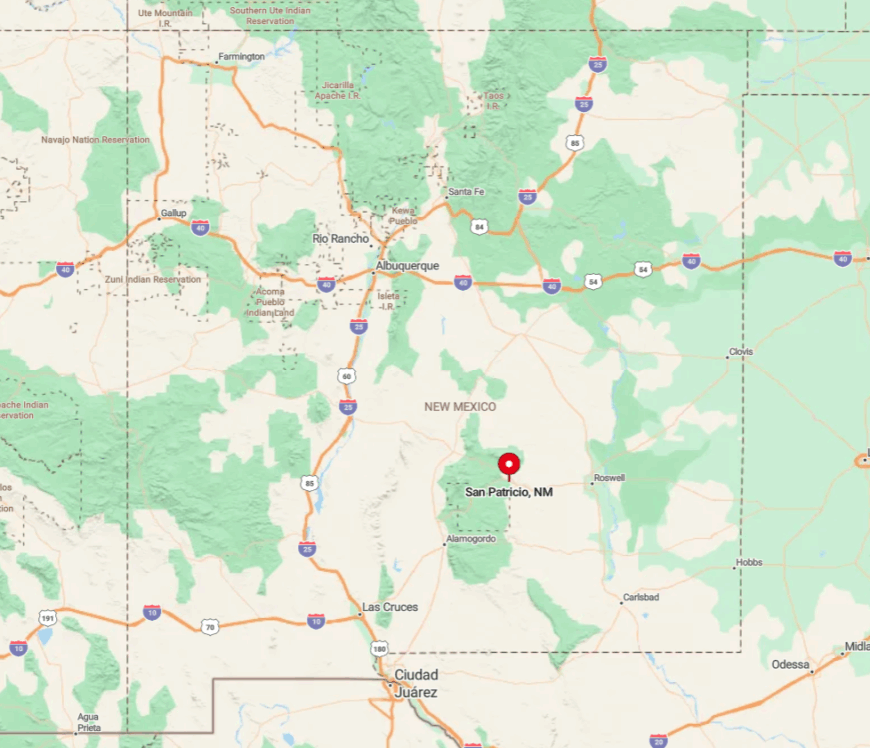
This hamlet lies along U.S. Highway 70, roughly 50 miles east of Ruidoso, tucked between Lincoln and Roswell. The Hondo River bends through town, creating a narrow ribbon of green that contrasts with the surrounding scrubby mesas.
Most travelers arrive by car, following the Billy the Kid Scenic Byway that winds past historic Lincoln before slipping into the valley. Because the route stays relatively quiet, the drive itself becomes part of the serene experience.
17. Bernalillo: Uncover History at the Coronado Historic Site
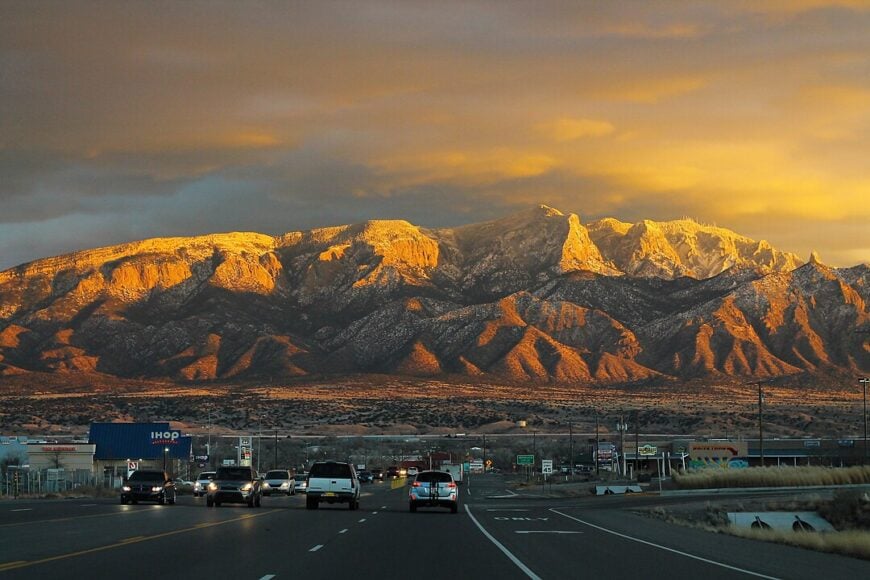
Bernalillo may straddle busy Interstate 25, yet its heart beats to centuries-old rhythms that revolve around the nearby Coronado Historic Site. The site protects the ruins of Kuaua Pueblo and the remnants of a 17th-century mission church, where I’m always stunned by the original kiva murals on display.
Downtown, San Lorenzo Church anchors a lively Fiestas de San Lorenzo each August, blending Catholic tradition with local dance troupes. Craft breweries and family-run restaurants have sprung up along Camino del Pueblo, making mission explorations easy to pair with a cold pint or plate of red-chile enchiladas.
On weekends, I like to stroll the Bosque trail that follows the Rio Grande, whispering beneath giant cottonwoods the way it must have when friars first arrived. Bernalillo proves you don’t have to leave the metro area to feel the depth of New Mexico’s mission era.
For those interested in making Bernalillo their home, 3-4 bedroom houses are priced between $300,000 and $450,000, reflecting the town’s rich cultural heritage and proximity to historic missions.
Where is Bernalillo?
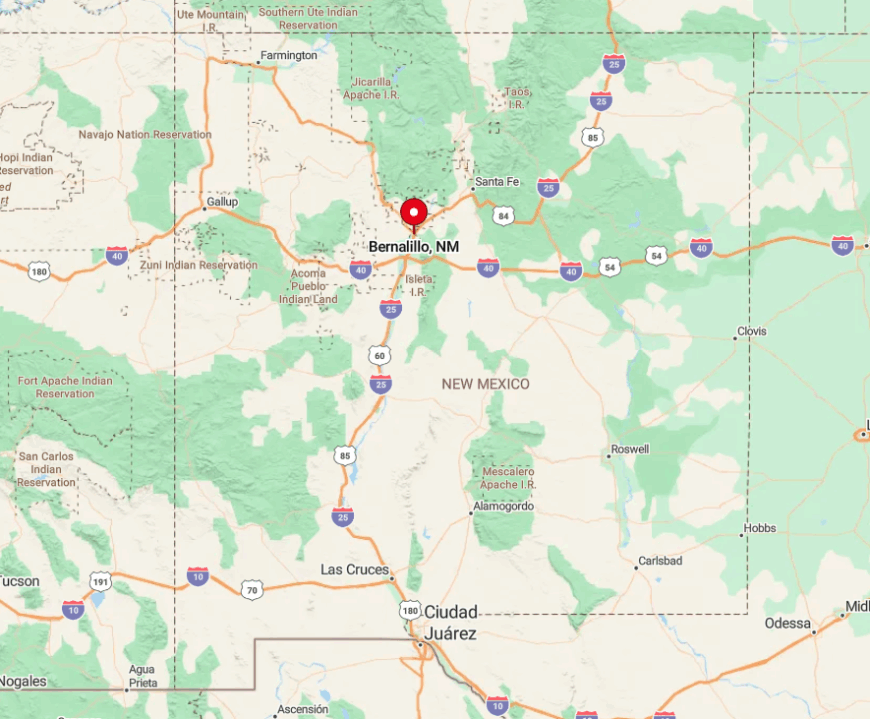
The town sits about 18 miles north of Albuquerque, hugging the east bank of the Rio Grande at an elevation of 5,000 feet. Sandia Mountains tower to the east, giving every sunset a rose-colored flourish that frames San Lorenzo’s bell tower.
Reaching Bernalillo is simple via I-25 or the New Mexico Rail Runner, whose commuter trains stop a short walk from historic Camino del Pueblo. That convenient access makes it an ideal base for day trips to more remote mission ruins deeper in the state.
16. Picurís Pueblo: Experience Tradition at San Lorenzo de Picurís Mission
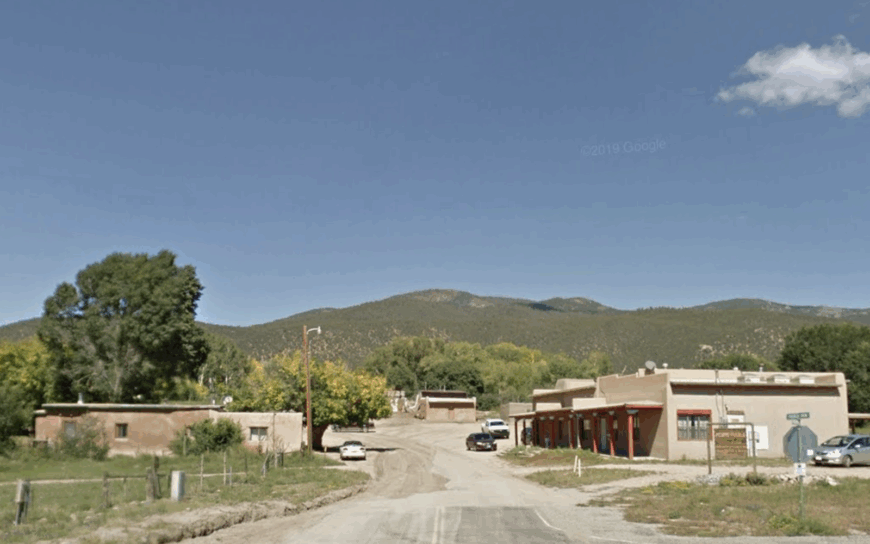
Hidden in a lush fold of the Sangre de Cristo Mountains, Picurís Pueblo feels worlds away from modern bustle, and its earth-toned San Lorenzo mission church mirrors the tranquility.
The pueblo community rebuilt the church in the 1990s using traditional mud plaster, yet it still rests on 18th-century foundations, so every adobe brick connects past to present.
When I visit during the annual San Lorenzo Feast Day in August, the plaza fills with dancers whose drums echo off pine-covered hills. A small museum nearby displays mica-flecked pottery unique to Picurís artisans, a perfect keepsake after touring the church.
For outdoor lovers, the trout-filled Pecos River headwaters run just up the road, offering quiet fishing spots few tourists find. All of it combines to make Picurís a rare place where mission architecture and Pueblo lifeways remain harmoniously intact.
3-4 bedroom homes in Picurís Pueblo typically cost between $200,000 and $300,000, offering a tranquil setting with deep historical roots tied to Spanish colonial influence.
Where is Picurís Pueblo?
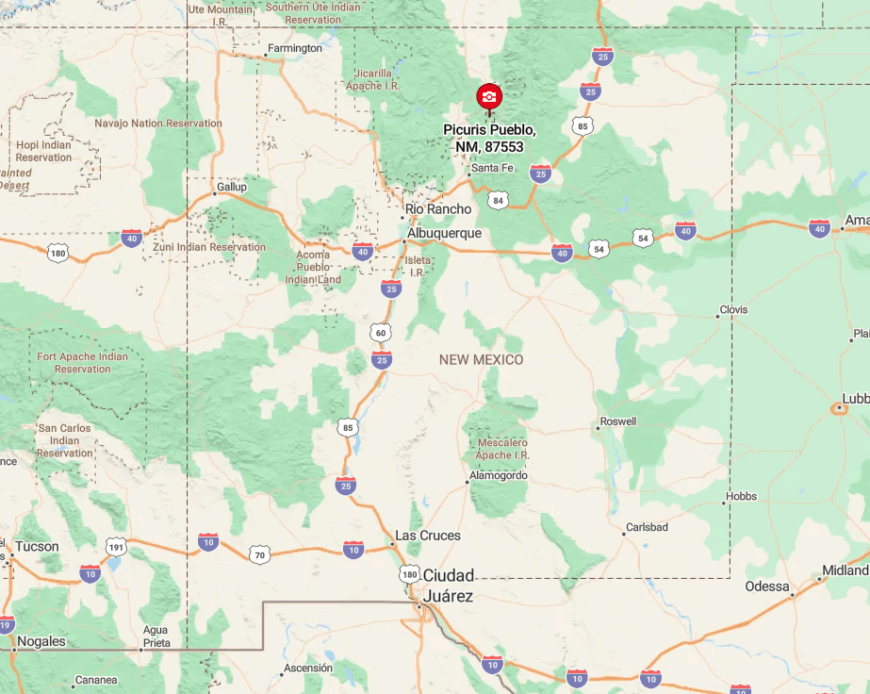
The pueblo lies about 24 miles south of Taos, accessible via NM-75, a winding mountain road that treats drivers to sweeping alpine meadows. At 7,000 feet, the elevation keeps summers cool and winters picture-perfect under snow-capped peaks.
Visitors must check in at the tribal office, and photography rules protect sacred spaces, so plan ahead. Because public transport is nonexistent here, having your own vehicle is essential to fully appreciate the secluded setting.
15. Peña Blanca: Explore Nearby Historic Missions Amidst Natural Beauty
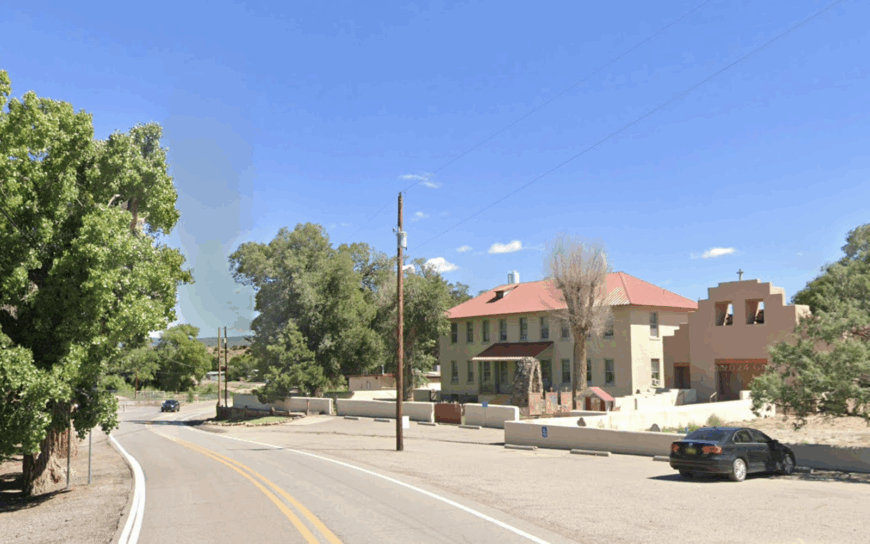
Peña Blanca rests on a broad Rio Grande terrace where fertile fields meet stark desert slopes, creating an unexpected backdrop for mission-hopping. Though the town itself hosts the humble Our Lady of Guadalupe Church, I usually stay here so I can quickly reach Kewa Pueblo mission just ten minutes north.
The blue-and-white retablo inside that church gleams beneath flickering candles, reminding me why these missions draw pilgrims even today. After absorbing that history, I head to nearby Cochiti Lake for kayaking beneath pastel cliffs, then return for green-chile burgers at the Peña Blanca Café that locals swear by.
With agricultural landscapes, water recreation, and centuries-old chapels, Peña Blanca offers a little of everything within a few scenic miles. In Peña Blanca, 3-4 bedroom homes are priced between $250,000 and $400,000, providing easy access to historic mission churches nestled along the Rio Grande.
Where is Peña Blanca?

Situated off NM-22, the village lies 35 miles southwest of Santa Fe and 50 miles north of Albuquerque, making it an easy detour from either city. The Rio Grande’s gentle bend here waters orchards and alfalfa fields, while Tent Rocks National Monument’s striped hoodoos rise dramatically to the west.
You can reach Peña Blanca by car via I-25 to the Cochiti Exit 259, followed by a short, winding drive through cottonwood groves. Limited cell service near the river reminds visitors they’ve stepped into quieter territory.
14. Mesilla: Stroll Through a Historic Town Center with Mission Charm
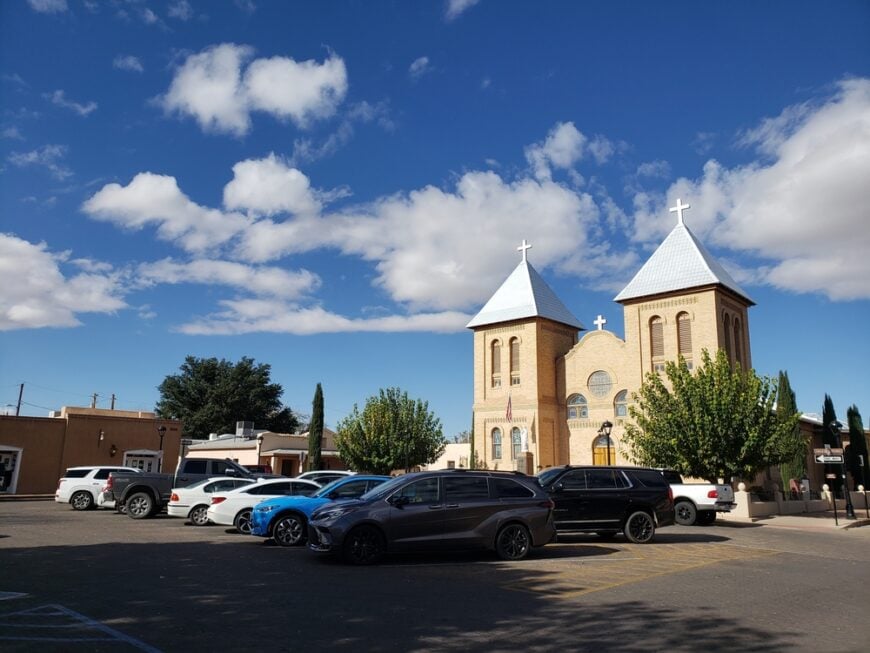
Mesilla’s sun-baked plaza instantly carries me back to 19th-century Mexico, and the twin towers of the Basilica of San Albino complete the timeless scene. Built on the site of an earlier 1850s mission, the current church showcases stained-glass windows imported from France and locally fired adobe bricks.
Between low-slung portales, boutiques sell hand-tooled leather and chilé ristras, while La Posta restaurant dishes out legendary sopaipillas inside an 1840s stagecoach stop. Evening strolls reveal brass mariachi notes swirling under fairy-lit trees, an ambiance perfect after a day touring San Albino’s interior.
If you crave quieter moments, the lesser-known Chapel of Our Lady of Guadalupe sits a block away, its simple altar honoring the area’s earliest settlers. Mesilla demonstrates how mission heritage can thrive amid lively shops, cafés, and late-night serenades.
Mesilla features 3-4 bedroom homes ranging from $350,000 to $500,000, making it a popular choice for those who appreciate adobe charm and centuries-old mission architecture.
Where is Mesilla?
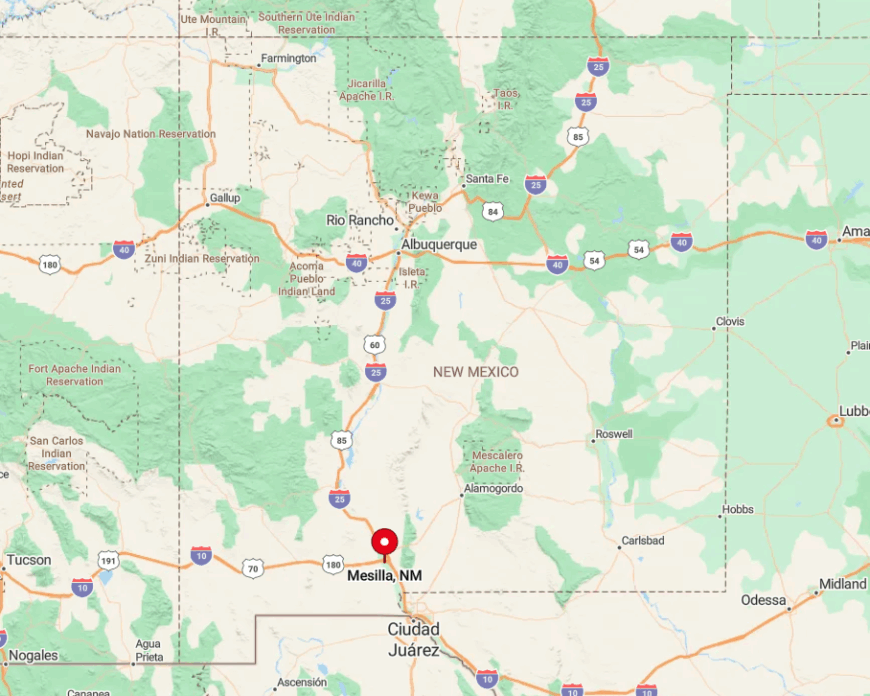
This historic enclave borders Las Cruces in southern New Mexico, just west of Interstate 10 and a mere 45 miles north of El Paso. The Organ Mountains rise to the east, creating dramatic sunrises that gild San Albino’s façade in pink and gold.
Travelers can fly into El Paso International Airport, rent a car, and arrive in Mesilla within an hour, or take the scenic El Camino Real Byway if time allows. Once in town, flat streets make walking or bicycling the most pleasant ways to soak up the mission atmosphere.
13. Zuni Pueblo: Discover the Unique Our Lady of Guadalupe Mission
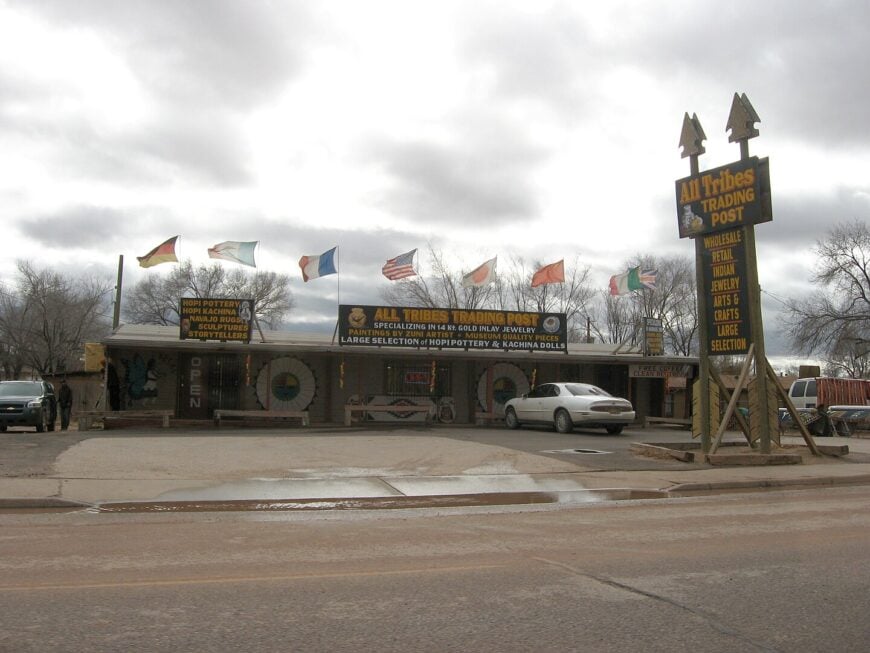
Zuni Pueblo astonishes first-time visitors with its sprawling village of stacked stone buildings, but the real showstopper is Our Lady of Guadalupe Mission, rebuilt in 1966 atop a 1620 foundation.
Inside, I always pause at the vibrant murals created by Zuni artists, who infused Catholic iconography with corn plants, deer, and traditional kachinas, crafting a visual dialogue between two worlds.
If you arrive during the Sh’alako festival in December, you’ll witness ceremonial calls for blessing and protection that ripple through the pueblo for hours. Nearby Hawikku and Kechipaun ruins give further insight into early encounters between Spanish missionaries and Zuni ancestors.
Together, these experiences reveal a community that honors its past while continuously reshaping mission heritage through an Indigenous lens. Zuni Pueblo offers 3-4 bedroom homes between $150,000 and $250,000, reflecting its commitment to cultural preservation and affordability near sacred historical sites.
Where is Zuni Pueblo?
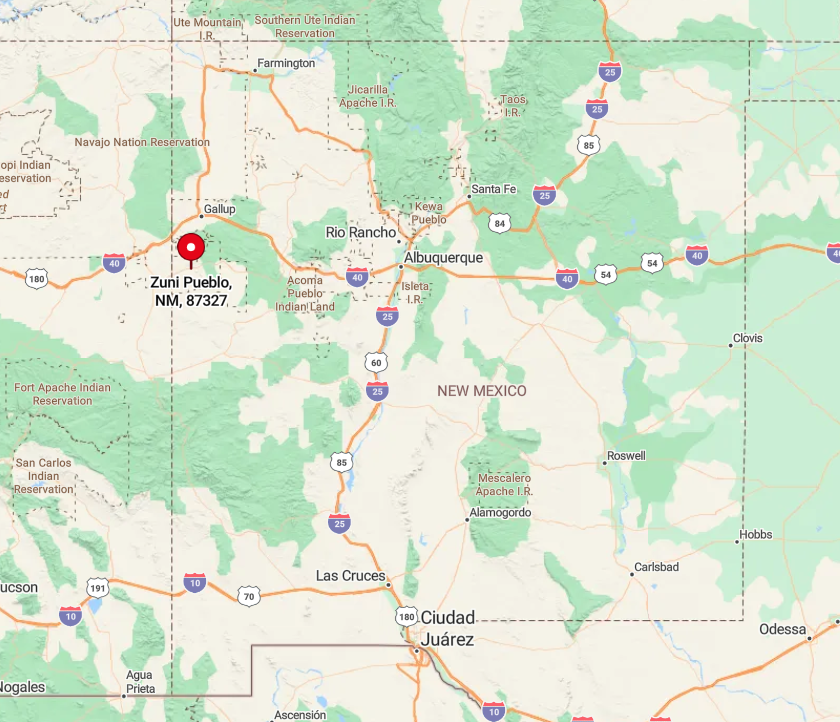
Set in the state’s far-western corner, Zuni lies about 35 miles south of Gallup along NM-602, surrounded by sandstone mesas and piñon-juniper forests. The nearest major airport is in Albuquerque, a three-hour drive east, so most visitors arrive by personal vehicle.
Highway travel feels meditative here, with long stretches of wide-open sky leading to the pueblo’s cluster of ochre buildings. Because Zuni maintains its own tribal sovereignty, check visitor center hours and photography rules before setting out.
12. Isleta Pueblo: Visit the St. Augustine Church at Isleta Mission
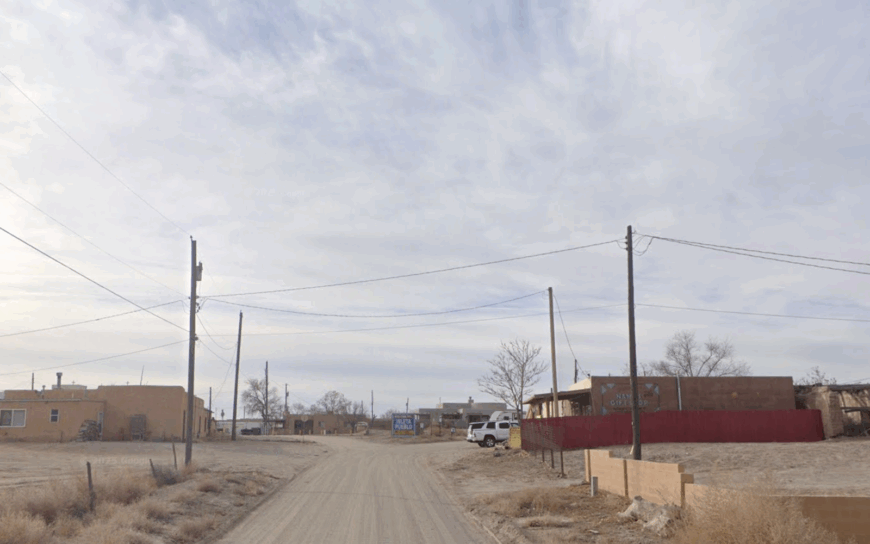
Driving onto Isleta Pueblo, I’m always struck by the towering cottonwoods lining the Rio Grande and the gleaming white walls of St. Augustine Church at their center. Though originally founded in 1622, the mission has undergone several restorations, the latest adding carved zia-symbol beams.
Liturgical music often drifts through the open doors, inviting passersby to step inside and admire a hand-painted altar screen that merges Pueblo symbolism with classic Catholic motifs. Just outside, traditional hornos bake bread for feast days, and the pueblo’s casino and hotel offer modern diversions minutes away.
A small cultural center across the plaza displays historic photographs of Isleta children in mission school uniforms, a poignant reminder of complex mission legacies.
For me, Isleta balances reverence, resilience, and contemporary enterprise in one compact visit. Isleta Pueblo has 3-4 bedroom homes priced between $200,000 and $300,000, offering a blend of accessibility and tradition just south of Albuquerque.
Where is Isleta Pueblo?
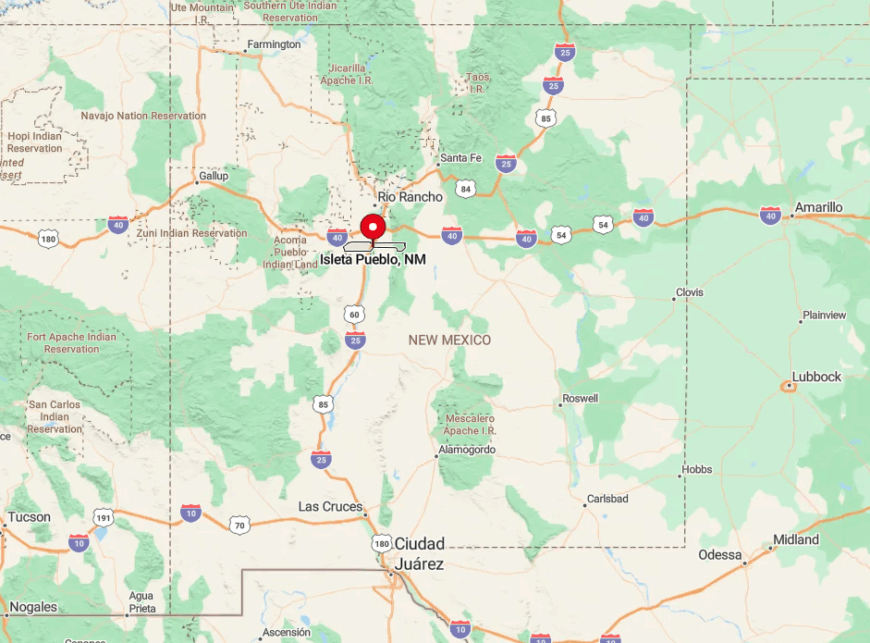
The pueblo sits 15 miles south of downtown Albuquerque, reachable via I-25 or the Rail Runner train that stops at Isleta Resort. Lush river bosque flanks the settlement, providing nesting grounds for egrets and a pleasant bike path along the levee.
Visitors exiting the freeway follow well-marked signs to the mission, passing chile fields and small farms. Because the church still serves an active congregation, plan around service times to tour the interior respectfully.
11. Santa Cruz: Explore the Historic Santa Cruz de la Cañada Church

Santa Cruz de la Cañada might look like a quiet suburb of Española, yet its 1733 mission church stands among the oldest continuously used in the Southwest. Thick adobe walls guard a gilded altar screen imported from Mexico City, and every Good Friday, I join locals in a candlelit procession that winds around the plaza.
Across the street, a tiny museum chronicles the town’s role as a defensive settlement along the Camino Real, a detail many highway travelers overlook. After admiring the mission, I walk down to Rio Arriba Roasters for a red-chile mocha, a modern perk that contrasts delightfully with colonial surroundings.
Nearby weaving studios in Chimayó supply colorful rugs if you want to extend the cultural immersion. All told, Santa Cruz offers a compelling primer on Northern New Mexico’s mission defenses and decorative artistry.
Santa Cruz features 3-4 bedroom homes ranging from $300,000 to $450,000, providing a scenic base to explore some of the oldest mission churches in the region.
Where is Santa Cruz?

The town lies four miles southeast of Española on NM-76, a scenic route that later climbs into the mountains toward Chimayó and Taos. Acequia irrigation ditches lace the valley, turning orchards and alfalfa fields surprisingly green against high-desert hills.
You can reach Santa Cruz in under 40 minutes from Santa Fe via U.S. 285, making it an effortless half-day excursion. Limited bus service exists, but a personal car grants greater flexibility to explore side roads dotted with roadside shrines.
10. Laguna Pueblo: See the Historic San José de Laguna Mission
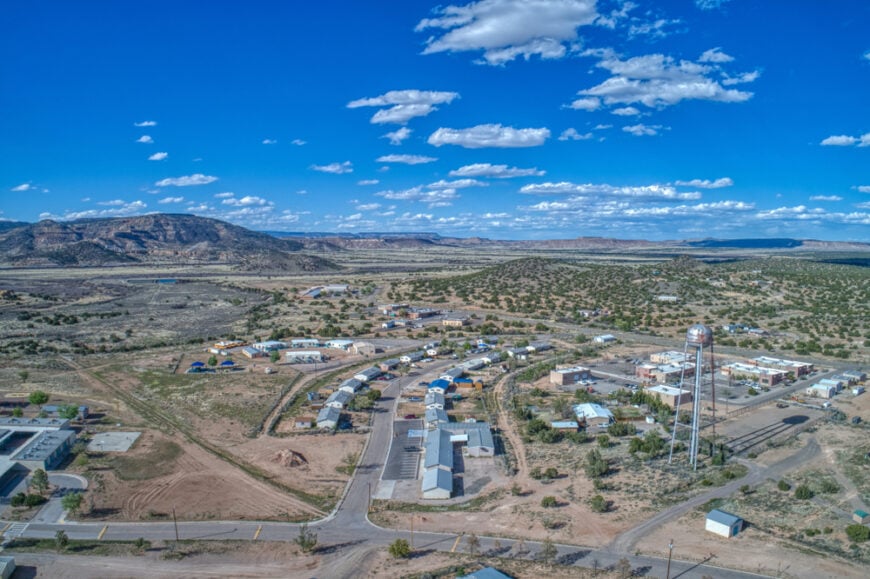
San José de Laguna, completed in 1699, soars over reddish sandstone cliffs, and I’m always amazed that its original adobe bricks still bear the makers’ fingerprints. The church’s ceiling, painted in turquoise and ochre zigzags, blends Pueblo geometry with European florals, a stunning synthesis forged within its thick walls.
Guides often explain how ancestors carried massive vigas from nearby Mount Taylor on foot, a feat I can scarcely imagine under the relentless sun. After the tour, I visit the on-site craft shop where potters sell signature black-on-white ceramics whose spiral motifs echo mission murals.
If timing aligns, the annual Feast of Saint Joseph on March 19 fills the plaza with dances, bread auctions, and the aroma of steaming posole. It’s then that the mission feels most alive, bridging 17th-century devotion with modern community pride.
Laguna Pueblo offers 3-4 bedroom homes priced between $175,000 and $250,000, ideal for those wanting to settle in a historically rich community with mission-era architecture.
Where is Laguna Pueblo?
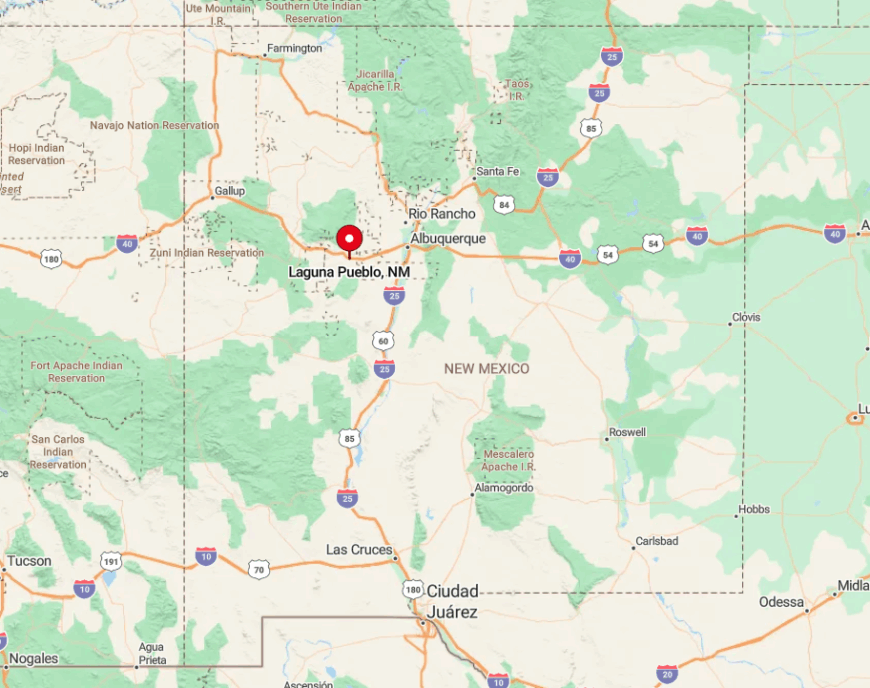
Laguna lies 45 miles west of Albuquerque along Interstate 40, where volcanic mesas give way to valley farmlands fed by seasonal washes. The pueblo sits just north of historic Route 66, so many travelers pair a mission visit with neon motel photo ops in neighboring towns.
A small Amtrak stop in nearby Grants offers an alternative entry, but driving remains the easiest way to explore multiple villages that form the Laguna reservation. Keep an eye out for posted photography rules and road signs indicating which pueblos are open to visitors on any given day.
9. Acoma Pueblo: Visit the Sky City and San Esteban del Rey Mission
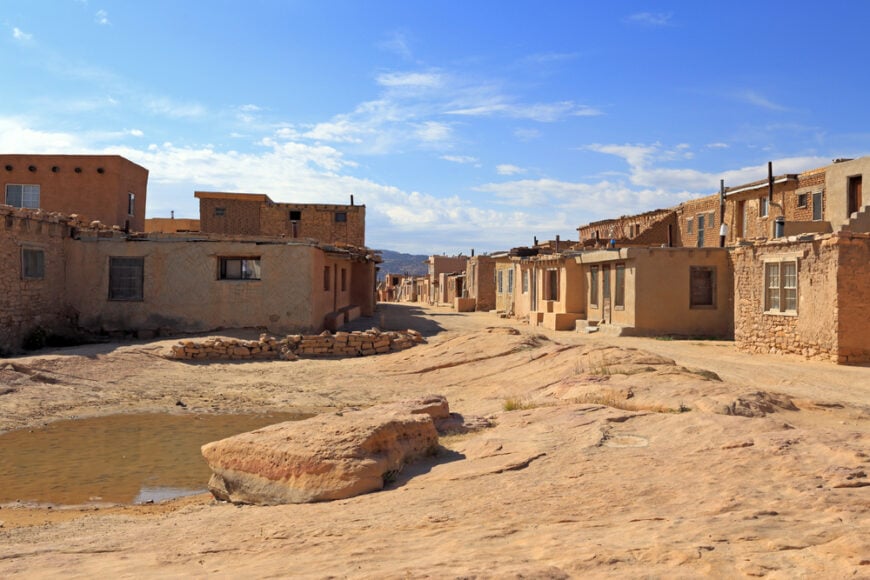
Perched atop a 367-foot sandstone mesa, Acoma’s Sky City leaves me breathless even before I climb the ancient stairway cut into the rock. At the summit, the 1629 San Esteban del Rey Mission dominates the skyline with buttressed adobe walls and a massive pine-log roof hauled from distant Mount Taylor.
Guided tours reveal a hand-carved confession booth and a graveyard that rests directly on the mesa edge, its graves sheltered from erosion by bits of pottery shards laid by relatives.
From certain angles, you can spot petroglyphs etched long before the mission rose, underscoring the span of human presence here. Artisan kiosks line the narrow streets, selling thin-walled pottery painted in earth and sky motifs that mirror the mesa’s colors.
Every visit reminds me how faith, geography, and resilience coalesce in this soaring sanctuary. In Acoma Pueblo, 3-4 bedroom homes are priced between $175,000 and $250,000, making it an affordable place to experience centuries-old history and living traditions.
Where is Acoma Pueblo?
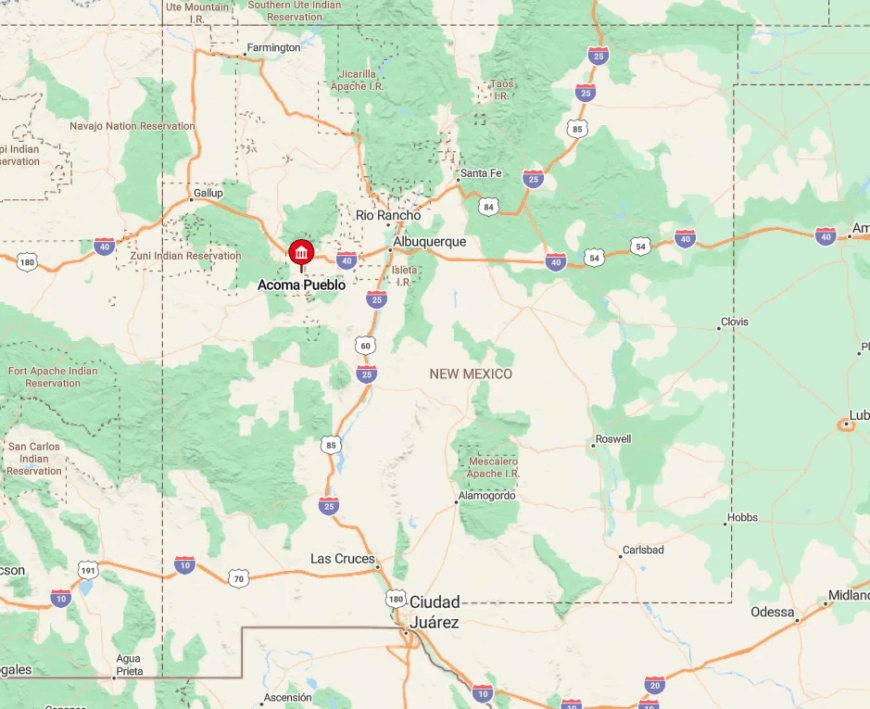
Sky City stands 60 miles west of Albuquerque, accessed via exit 102 off I-40 followed by a 15-mile drive to the visitor center. Shuttle buses then ferry guests up the mesa, though hardy souls may opt for the historic foot trail down afterward.
The surrounding desert basin glows golden at sunset, framing the mesa like a natural stage. Because entry is by guided tour only, booking ahead guarantees a spot and the chance to photograph the mission legally.
8. Gran Quivira: Dive into History at New Mexico’s Largest Mission Ruins

Gran Quivira overwhelms with sheer scale, its gray-stone mission walls stretching across a lonely limestone knoll in the Salinas Valley. I wander through roofless nave arches and consider how friars and Pueblo laborers endured harsh winters to construct this outpost in the 1600s.
Interpretive signs reveal a once-thriving salt trade that funded the mission’s ambitious size, a detail many visitors miss among the ruins’ stark beauty. Seasonal star-gazing events use the church’s husk as a silhouette against Milky Way skies, a hauntingly beautiful experience.
Nearby, a short trail leads to older Pueblo room blocks where pottery sherds still sparkle underfoot. Standing there at dusk, I feel I’m eavesdropping on centuries-old conversations between cultures and climates.
Gran Quivira has 3-4 bedroom homes ranging from $200,000 to $300,000, offering a unique opportunity to live near dramatic mission ruins in the Salinas Pueblo Missions area.
Where is Gran Quivira?
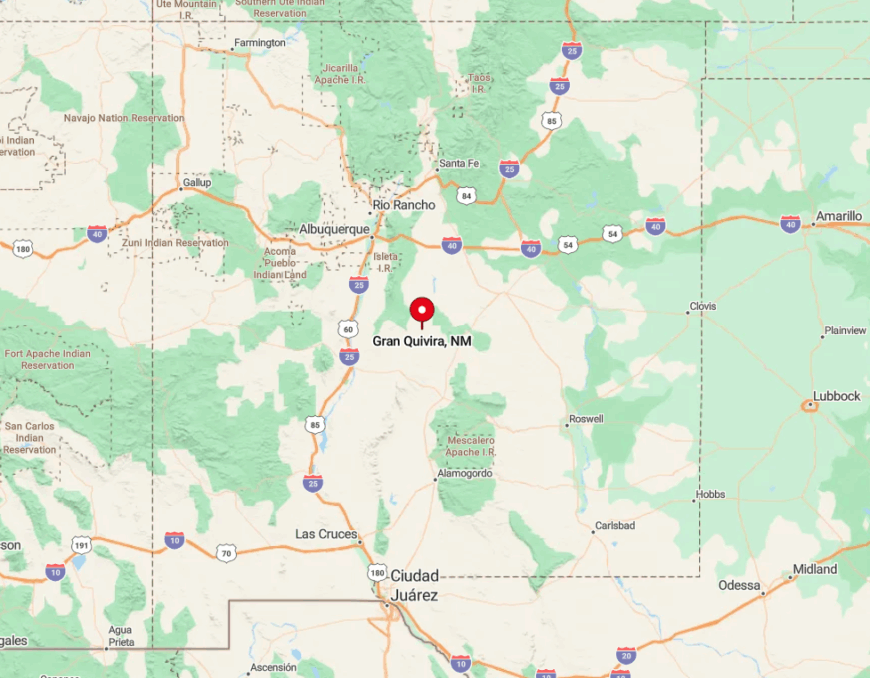
The site sits 25 miles south of Mountainair on NM-55 within the Salinas Pueblo Missions National Monument. Rolling grasslands dotted with cholla cactus make the drive scenic yet desolate, so bring water and fuel.
Albuquerque lies about 95 miles northwest, making Gran Quivira feasible as a long day trip by car. Lack of public transit means self-driving is essential, but light traffic rewards travelers with open-road freedom.
7. Quarai: Experience Serenity Amidst Ancient Mission Ruins
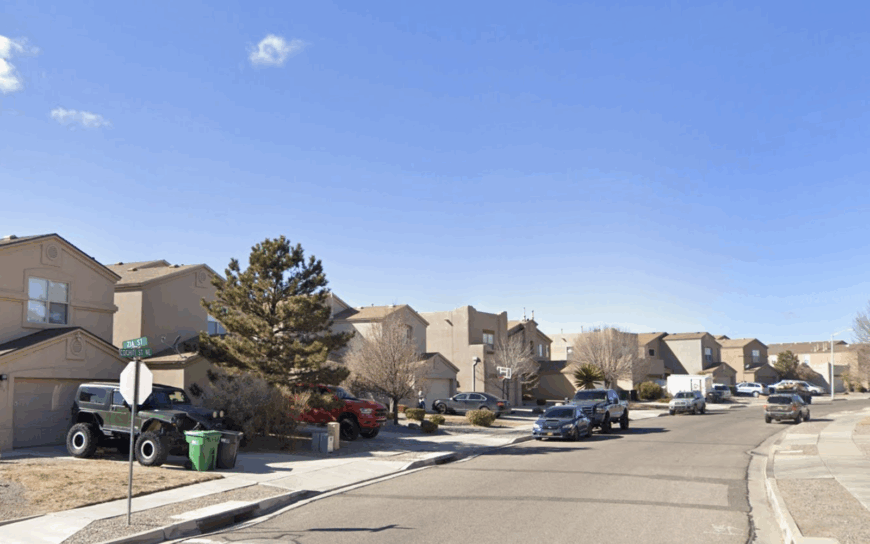
Quarai’s towering red-stone church ruins rise unexpectedly from a quiet cottonwood grove, and each time I arrive, the peace feels almost tangible. Completed around 1632, the mission’s shell still encloses a dooryard where swallows nest in summer, their calls echoing softly off vaulted walls now open to the sky.
A small visitor center houses artifacts like ceremonial trumpets and trade beads that hint at the bustling life once thrumming here. I always take the spur trail to the spring that sustained both Pueblo and friars, its gentle gurgle giving voice to the land’s enduring generosity.
Picnic tables beneath shade trees make this my favorite lunch spot within the Salinas complex. Quarai may be ruins, yet the atmosphere of sacred calm remains wholly intact.
Quarai offers 3-4 bedroom homes priced between $200,000 and $300,000, perfect for history lovers seeking to be close to preserved Spanish mission remnants.
Where is Quarai?

Located eight miles north of Mountainair on NM-55, Quarai anchors the northern reach of Salinas Pueblo Missions National Monument. The Manzano Mountains loom to the west, their forested slopes contrasting with Quarai’s red masonry.
Visitors typically drive from Albuquerque in about 90 minutes, though a scenic detour along the Turquoise Trail can add charm to the journey. Because the cell signal is patchy, downloading maps beforehand ensures you won’t miss the easy-to-overlook entrance sign.
6. Abó: Wander Through the Salinas Pueblo Missions National Monument
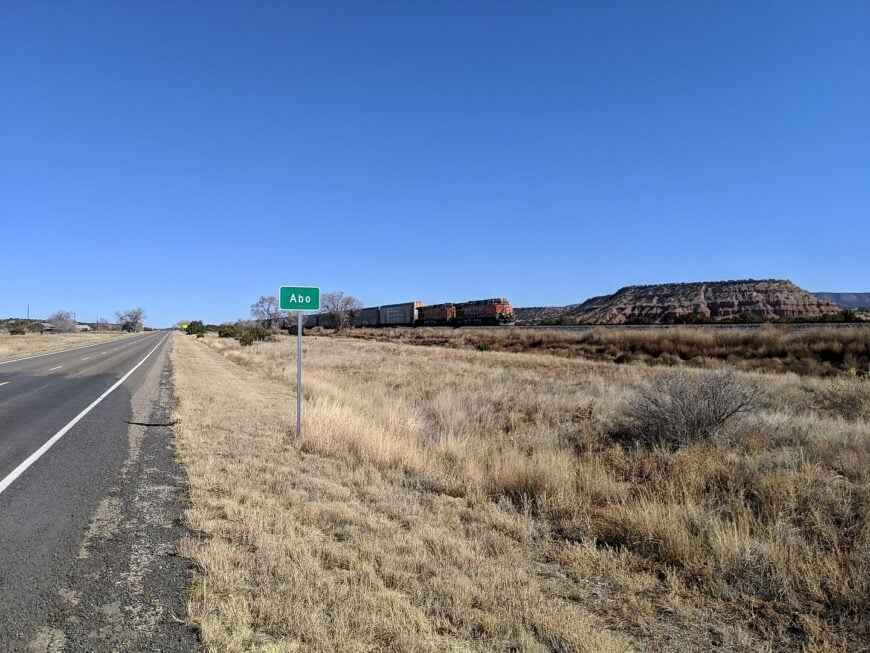
At Abó, I’m greeted by ochre-colored church walls framed against the distant Chupadera Mesa, a vista that makes photography irresistible. The mission, dating to 1622, shows clear evidence of Pueblo craftsmanship in its gentle curved niches and embedded pottery shards that helped stabilize adobe.
A self-guided loop passes through kivas and living quarters, revealing how Catholic and Indigenous rituals once coexisted side by side. Late afternoons bring cooling breezes scented with sage, perfect for lingering while canyon wrens provide a natural soundtrack.
During monsoon season, puddles reflect the bell tower like polished mirrors, an ephemeral postcard few tourists witness. Abó teaches patience; the more you look, the more layers of cultural synthesis you uncover.
Abó features 3-4 bedroom homes between $200,000 and $300,000, placing residents within reach of the region’s striking mission ruins and high desert scenery.
Where is Abó?

Abó lies nine miles west of Mountainair via U.S. 60 and NM-513, perched on the edge of a wide desert basin. Albuquerque is about 90 miles northwest, so most visitors come by car in roughly an hour and a half.
Because it shares a monument pass with Gran Quivira and Quarai, you can easily tour all three in a single ambitious day. Restrooms and water are available on-site, but services between ruins are sparse, underscoring the mission’s historic isolation.
5. Jemez Springs: Uncover Ruins at the Jemez Historic Site
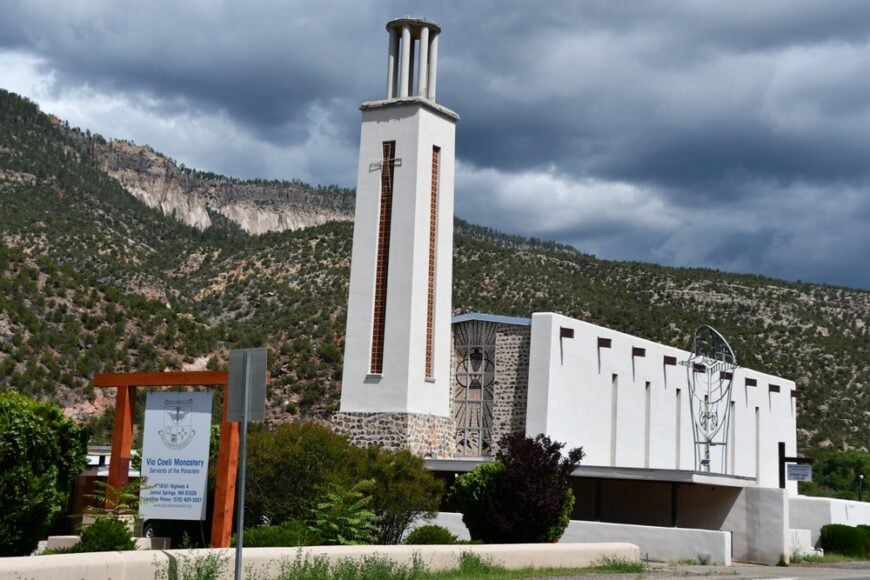
Jemez Springs pairs hot mineral baths with centuries-old mission ruins, a combination I find irresistibly restorative. The 1621 San José de los Jémez church stands within stone walls that once enclosed a thriving Gíusewa Pueblo, now interpreted by thoughtful trail markers and a small museum.
After exploring the ruins, I soak at the village bathhouse, letting geothermal waters ease muscles the way they have for travelers since mission days. Red cliffs towering above the town glow at sunset, making the ruins appear almost sculpted from the same fiery rock.
For an extra treat, hike the nearby Spence Hot Springs trail where steam rises beside the snow-fed Jemez River. Few places allow you to time-travel and spa-treat in one afternoon like Jemez Springs.
Jemez Springs has 3-4 bedroom homes priced between $350,000 and $500,000, ideal for those wanting a mountain retreat near centuries-old mission sites.
Where is Jemez Springs?
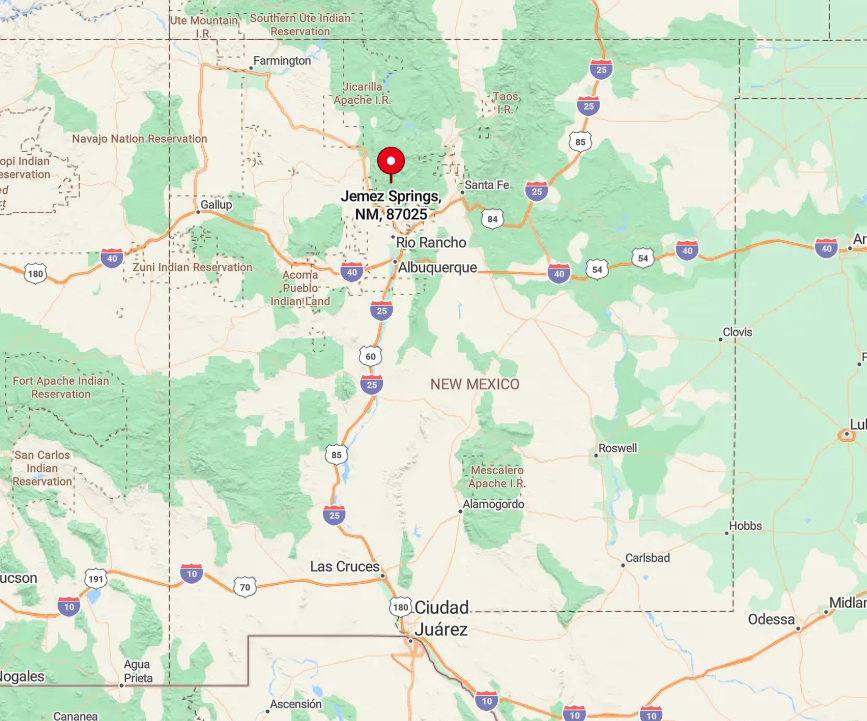
This mountain village rests along NM-4, 60 miles northwest of Albuquerque, through a canyon road lined with ponderosa pines and volcanic tuff formations. The Jemez River runs parallel, offering fishing pull-outs and picnic nooks every few miles.
While no major public transport reaches the area, the drive from either Albuquerque or Santa Fe is rewarded with dramatic mesas and vistas. Arrive early on weekends to secure parking near the historic site and bathhouse.
4. Socorro: Explore the Historic San Miguel Mission

Socorro’s San Miguel Mission claims roots back to 1598, and walking inside, I still sense the fortitude of those earliest colonists. The current 19th-century adobe structure preserves original vigas and a carved altar screen restored with locally mined pigments.
After touring the mission, I like to wander the plaza farmers market for green-chile bread before heading to Bosque del Apache Wildlife Refuge, whose wintering sandhill cranes provide a spiritual spectacle of their own.
Tech enthusiasts can detour to the Very Large Array radio telescopes west of town, proof that Socorro bridges old and new frontiers with ease. A surprising gem is the Hammel Museum, housed in a former brewery that tells both frontier and mission stories through eclectic artifacts.
Socorro’s blend of science, wildlife, and enduring faith makes it a mission town that looks firmly toward tomorrow. Socorro offers 3-4 bedroom homes between $200,000 and $300,000, blending affordability with access to historical landmarks and nearby mission churches.
Where is Socorro?
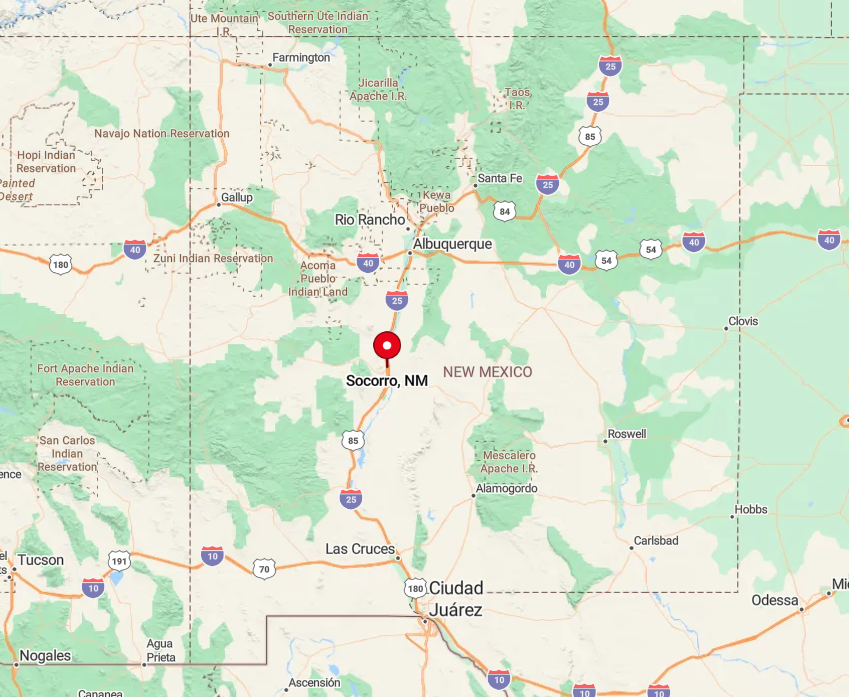
The city lies along Interstate 25, 75 miles south of Albuquerque at the foot of the Magdalena Mountains. The Rio Grande’s western floodplain supplies lush farmland, contrasting with stark desert hills nearby.
Travelers can reach Socorro by car or via Grover-run Greyhound buses, though having a vehicle helps in exploring outlying refuges and observatories. U.S. 60 provides an easy westward drive to the Very Large Array, making Socorro a natural hub for wider adventure.
3. Ranchos de Taos: Admire the Iconic San Francisco de Asís Mission Church
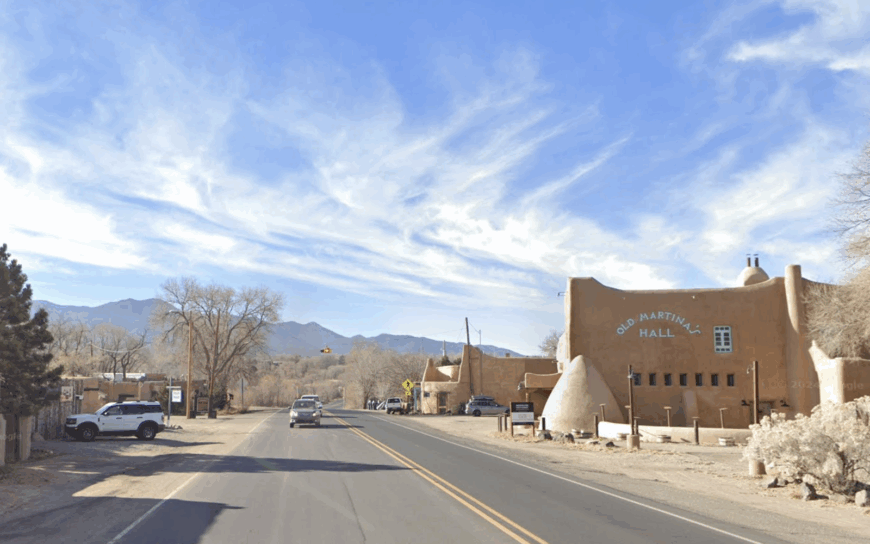
Few places capture me like Ranchos de Taos, where the San Francisco de Asís Church stands in sculptural perfection beneath bright northern light. Georgia O’Keeffe and Ansel Adams immortalized its buttressed rear walls, and I still notice new shadows each time I visit them myself.
Inside, hand-painted altar screens glow behind thick adobe, and a curious collection of saints’ vestments illustrates centuries of devotion. The adjacent Plaza de Taos ranchos offers galleries brimming with tinwork and weavings, ideal for browsing after mass or a guided church tour.
I recommend visiting during the annual mud-plastering in early June when locals and visitors alike re-coat the walls by hand, an act of communal artistry dating back to the mission’s founding in 1772.
Evening brings a soft alpenglow on the Sangre de Cristo range, illuminating the church in hues no camera can truly capture. Ranchos de Taos features 3-4 bedroom homes ranging from $350,000 to $500,000, surrounding residents with adobe architecture and the iconic San Francisco de Asís Mission Church.
Where is Ranchos de Taos?

The village lies four miles south of Taos along NM-68, an easy flat drive that follows the Río Grande del Rancho. Elevated at 6,950 feet, the area enjoys crisp mornings and intense high-altitude sun that enhances adobe colors.
Public buses run between Taos and Ranchos, though most visitors arrive by car for flexibility. Once parked, the church, plaza, and cafés cluster conveniently within a two-block stroll.
2. Las Trampas: Step Back in Time at San José de Gracia Church
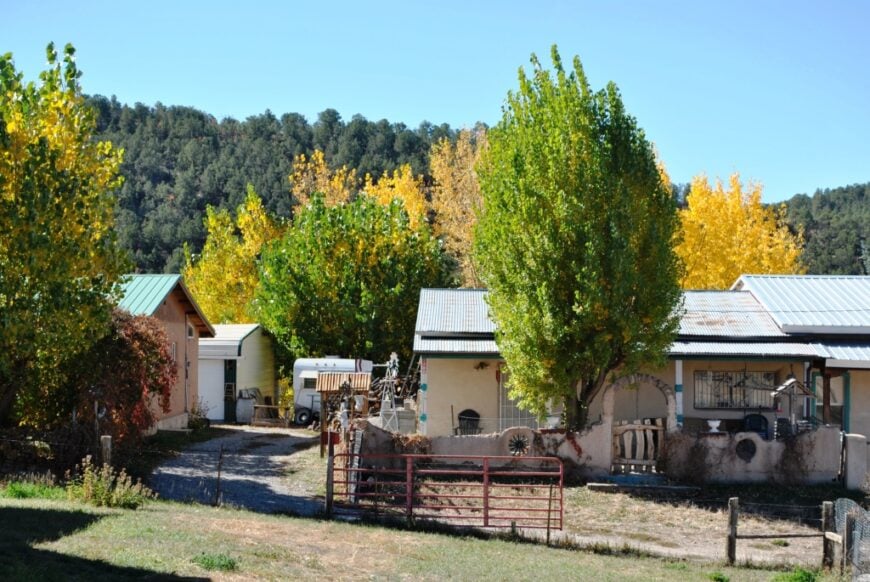
Entering Las Trampas feels like stepping into a preserved colonial snapshot: low adobe homes ring a dirt plaza dominated by the 1760s San José de Gracia Church, one of New Mexico’s best-kept mission treasures.
The village remains largely untouched by modern development, so wandering its lanes, you may hear only wind rustling through piñon and the distant clang of a goat bell.
Photographers relish the late-day light on the church’s weathered façade, particularly after summer rains darken the adobe to rich chocolate tones. I often pack a picnic and drive a little farther up NM-76 to the Sangre de Cristo lookout for sweeping valley views.
Such quiet authenticity makes Las Trampas a pilgrimage for anyone craving unfiltered mission history. Las Trampas offers 3-4 bedroom homes priced between $250,000 and $350,000, making it a scenic village with strong ties to Spanish colonial history.
Where is Las Trampas?

The hamlet sits 44 miles north of Santa Fe along the High Road to Taos Scenic Byway (NM-76), a route famed for mountain vistas and artisan studios. Dense aspen groves blanket the ridges behind town, igniting in gold each fall and framing the church in luminous color.
Because public transit is nonexistent, driving the winding two-lane highway is the only way to reach Las Trampas comfortably. Road pullouts offer plenty of opportunities to stop for photos without rushing the journey.
1. Chimayó: Discover the Sacred Santuario de Chimayó
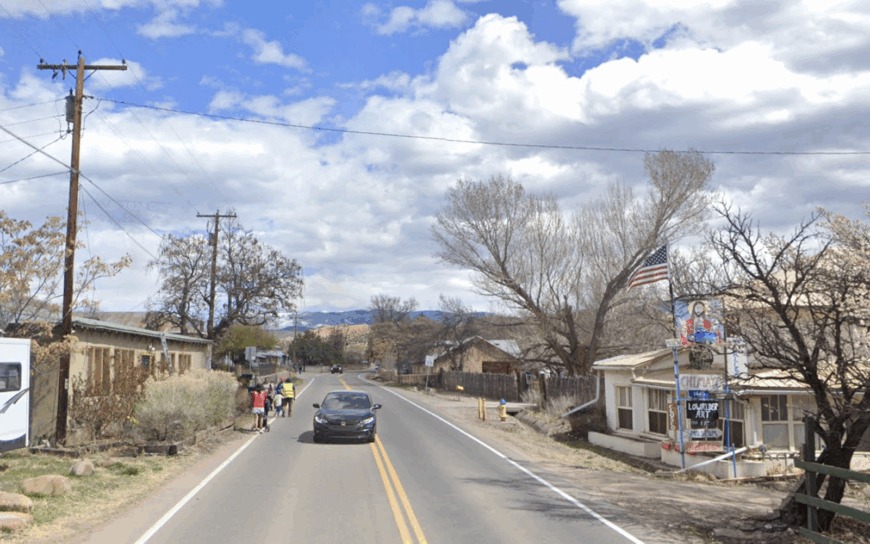
Chimayó caps this list for good reason: El Santuario de Chimayó, built in 1816, draws nearly 300,000 pilgrims yearly who seek the “holy dirt” believed to possess healing powers. The adobe chapel’s thick walls cradle ornate retablos, and I never tire of the hush that falls as visitors kneel by the tiny pocito well to collect earth in small tins.
Outside, weaving workshops like Ortega’s and Centinela produce world-renowned Chimayó blankets whose bold stripes echo mission floor patterns. During Holy Week, thousands walk through the night from Santa Fe, their candles flickering along NM-76 like a river of light—a sight I find both humbling and beautiful.
After quiet moments at the sanctuary, I treat myself to a plate of local specialty posole and red-chile tortillas at Rancho de Chimayó Restaurant, housed in a centuries-old hacienda.
Between spiritual resonance, living craft traditions, and famed cuisine, Chimayó embodies the enduring allure of New Mexico’s mission towns. Chimayó features 3-4 bedroom homes between $300,000 and $450,000, perfect for those who want to live near one of the Southwest’s most revered and historic pilgrimage sites.
Where is Chimayó?
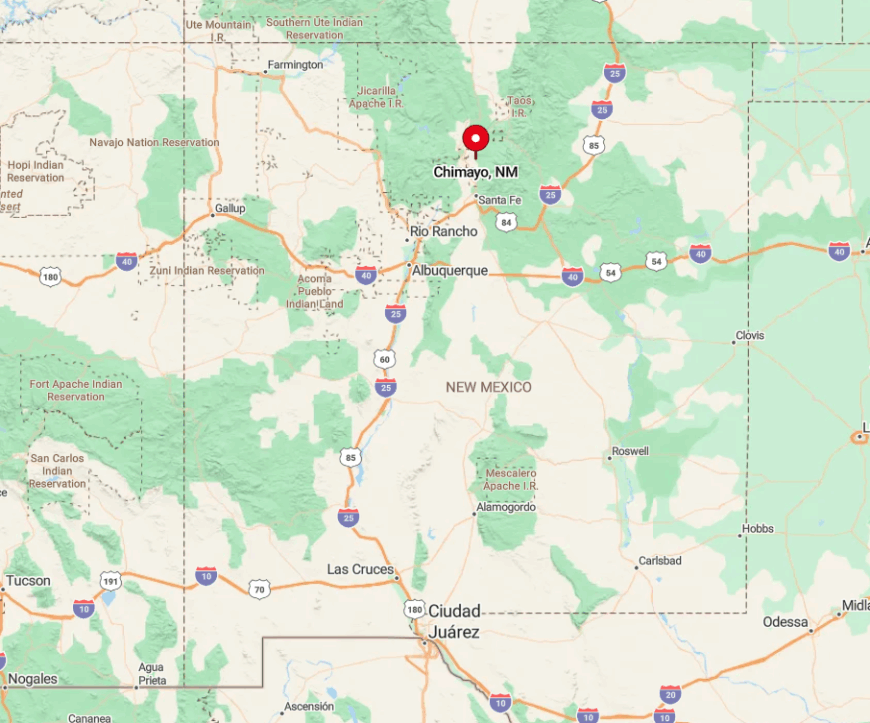
This village rests 28 miles north of Santa Fe along the High Road to Taos, nestled in the foothills of the Sangre de Cristo Mountains. Irrigation acequias nurture apple orchards and chile fields, lending a surprising green ribbon through otherwise arid terrain.
Most visitors arrive by car; however, shuttle services run during Holy Week to accommodate the massive pilgrimage crowds. Limited cell coverage and winding mountain roads encourage a slower pace, letting Chimayó’s sacred atmosphere sink in fully.


